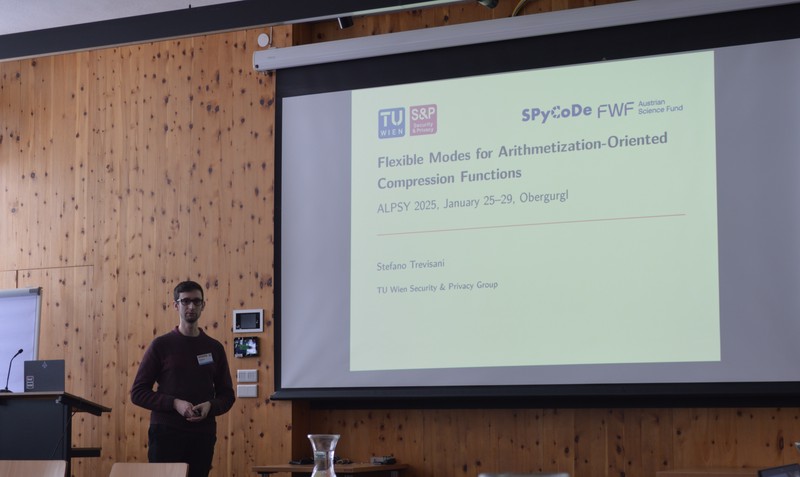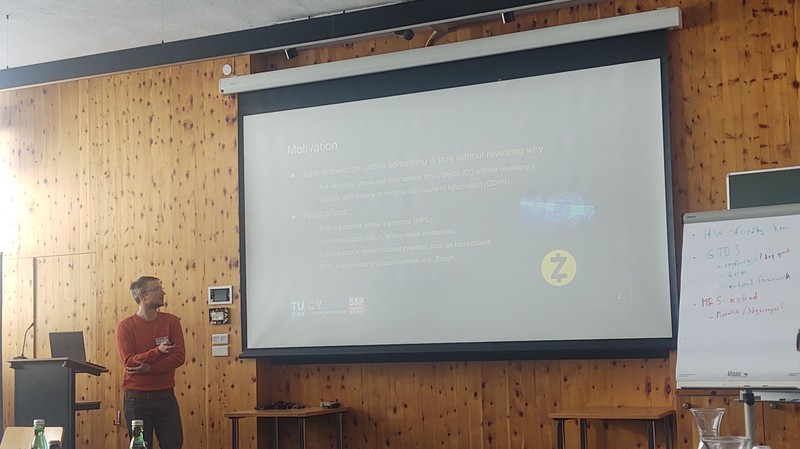Algebraic Aspects in the Design and Cryptanalysis of Modern Symmetric Cryptography
The research workshop “Algebraic Aspects in the Design and Cryptanalysis of Modern Symmetric Cryptography” (ALPSY) is designed to provide a platform for joint scientific discussions, initiate research collaborations, and showcase and explore research findings and challenges within the field.
At ALPSY 2025, which took place from January 25 to 29, 2025, at the Obergurgl Center of the University of Innsbruck, two presentations were given by CySec members.
Stefano Trevisani’s presentation, titled “Flexible Modes for Arithmetization-Oriented Compression Functions: Verifiable Computation and ZK-SNARKs,” delved into the complex relationship between hash functions and ZK-SNARKs, with a focus on arithmetization-oriented hash functions and compositional paradigms. He introduced two new families of modes, PGV-ELC and ELC-P, which are designed to enhance the flexibility and security of cryptographic systems. The presentation highlighted the security features of these modes, particularly their indifferentiability, a crucial attribute for the robustness of cryptographic schemes. Trevisani provided a detailed comparison of the security aspects of these modes, along with benchmarking results from Groth16 and Plonky2 to evaluate their performance under real-world conditions. Additionally, the discussion on Merkle Tree arity benchmarks showcased the efficiency of these modes in various configurations and their alignment with targeted design strategies in cryptography.
Marek Sefranek delivered a comprehensive presentation on hash functions within the context of PIOP-based SNARKs, emphasizing their role in zero-knowledge proofs and zk-SNARKs. These technologies enable proving truths such as age verification or GDPR compliance without revealing underlying data, thus enhancing privacy and security across systems like blockchains and anonymous cryptocurrencies like Zcash. His discussion highlighted the applications of zero-knowledge proofs in enforcing protocols in multi-party computations, verifiable computation, and establishing trust in decentralized systems. Sefranek also explored the broader SNARK landscape, including recursive SNARKs and Polynomial Interactive Oracle Proofs (PIOPs), discussing their integration into cryptographic systems.
Sefranek also raised several open questions that continue to challenge the field, such as proving the security of the Fiat-Shamir transformation outside the Random Oracle Model (ROM) and identifying the necessary properties of hash functions that go beyond collision resistance and pseudorandomness to achieve correlation intractability. These questions underscore the ongoing need for theoretical and practical advancements in constructing hash functions that can meet the stringent requirements of advanced cryptographic systems.


